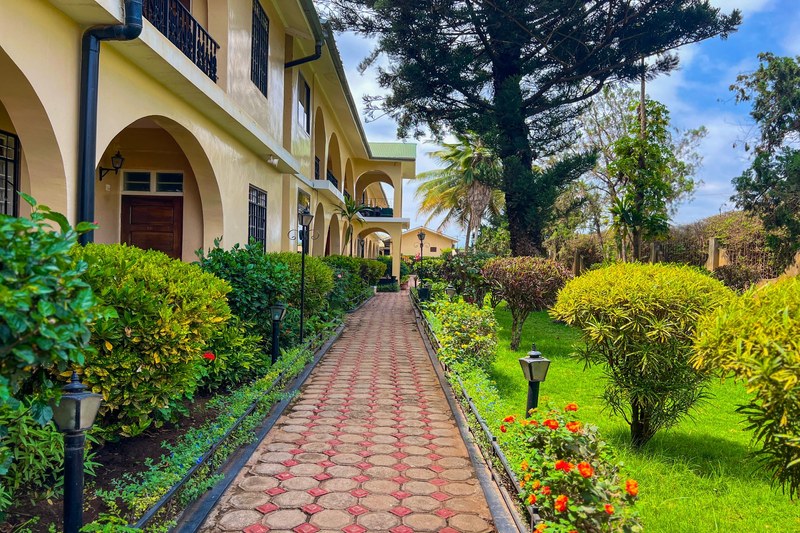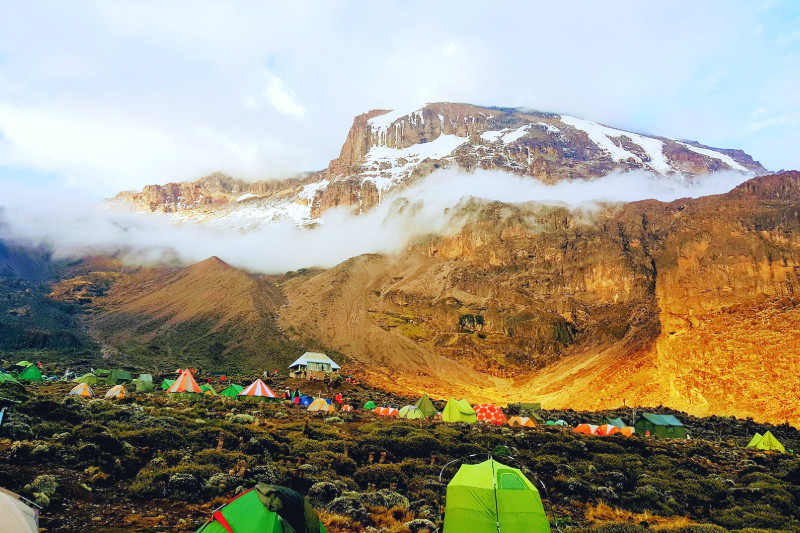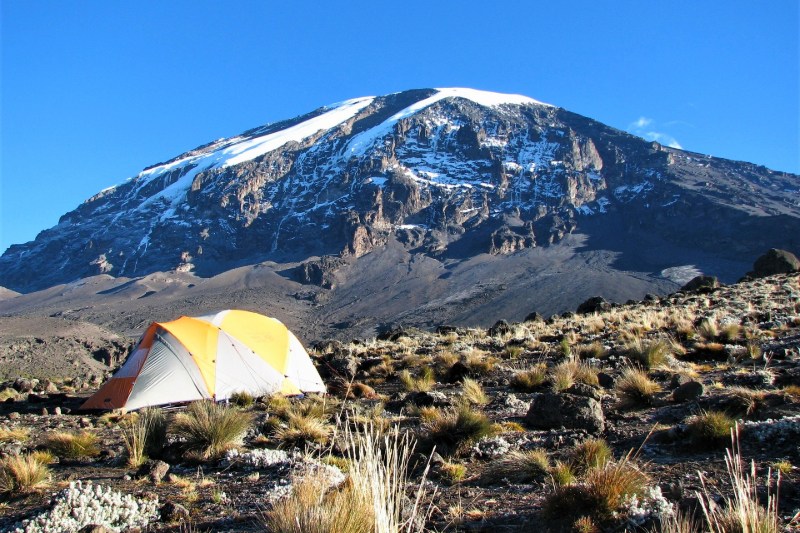Mount Kilimanjaro Machame Route
The sky is the limit! This is truly an adventure of a lifetime, along the Whisky Route to the summit of Kilimanjaro. Wander through enchanting forests, steep paths and over a ridge into the moorland zones to reach the breathtaking sceneries of the Shira Plateau, and ultimately the top of the mountain. Sleep under magnificent star covered skies and witness unparalleled sunrises as the continent awakens on this popular and unforgettable journey to the roof of Africa. If you’re looking for a challenge, climbing Kilimanjaro via the Machame route is the ultimate way to reach new heights on numerous levels.
To top it all off, this is an exceptional reason to reward yourself with an additional trip to the incredible Zanzibar or a brief Safari adventure as the perfect ending to your bucket-list experience!
Rates vary due to seasons and availability - request a quote for precise, favorable pricing and tailored travel planning.
Customize Your Trip
Best Price Guarantee
Flight Booking Assistance
Multilingual Guides
Certified Travelife Partner
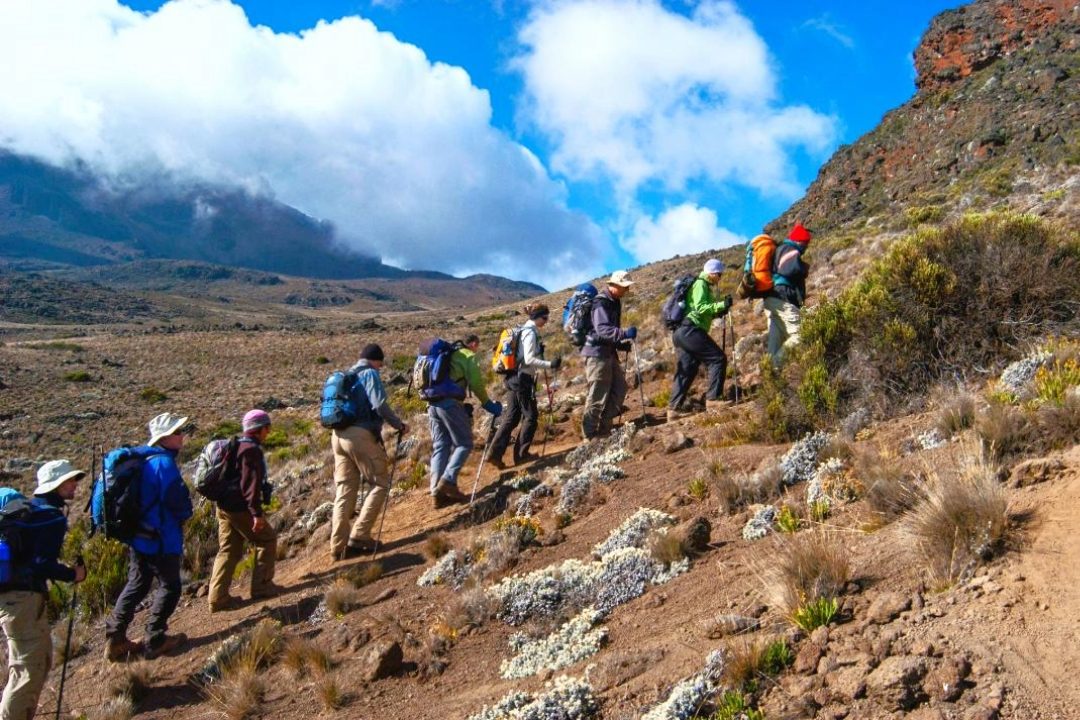
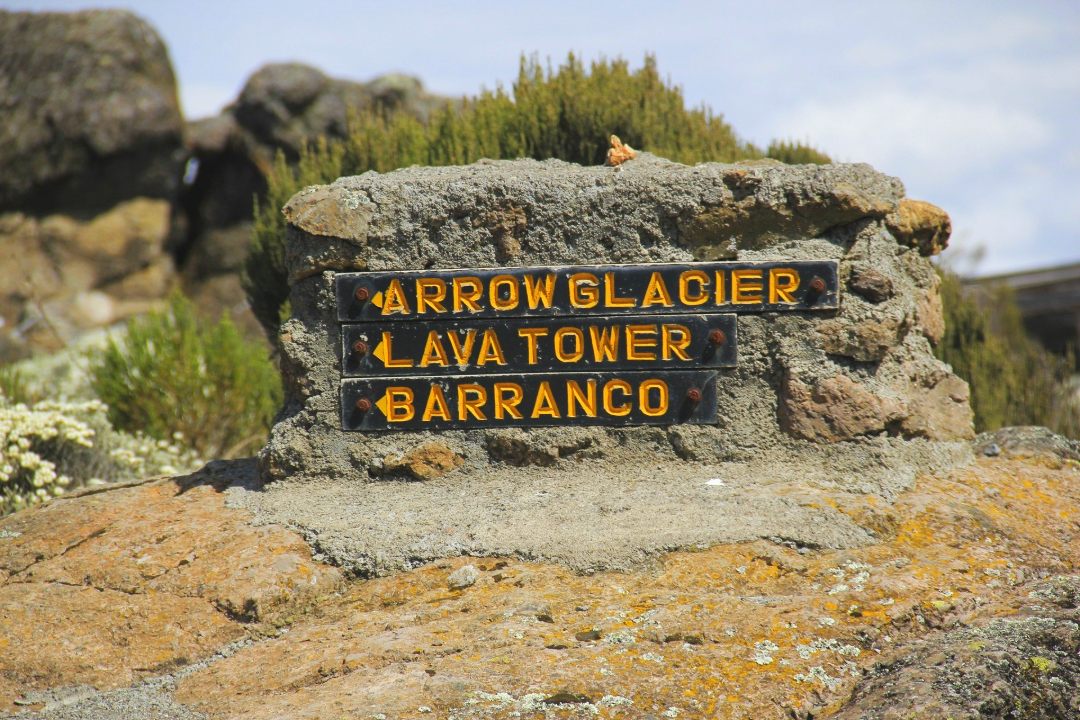
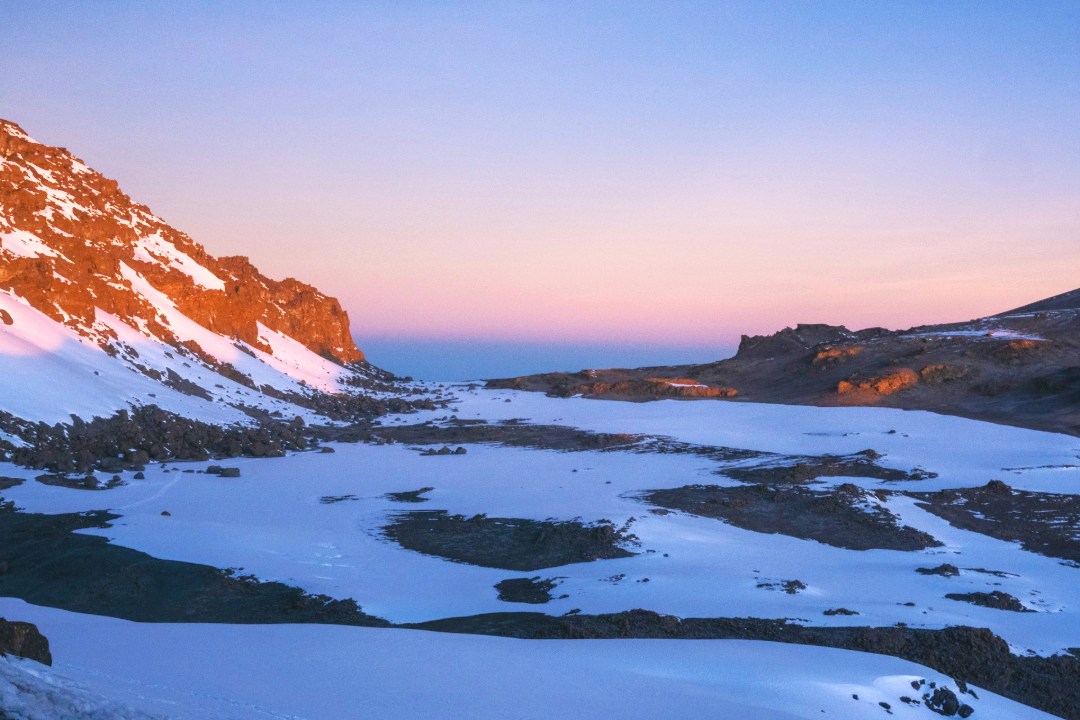
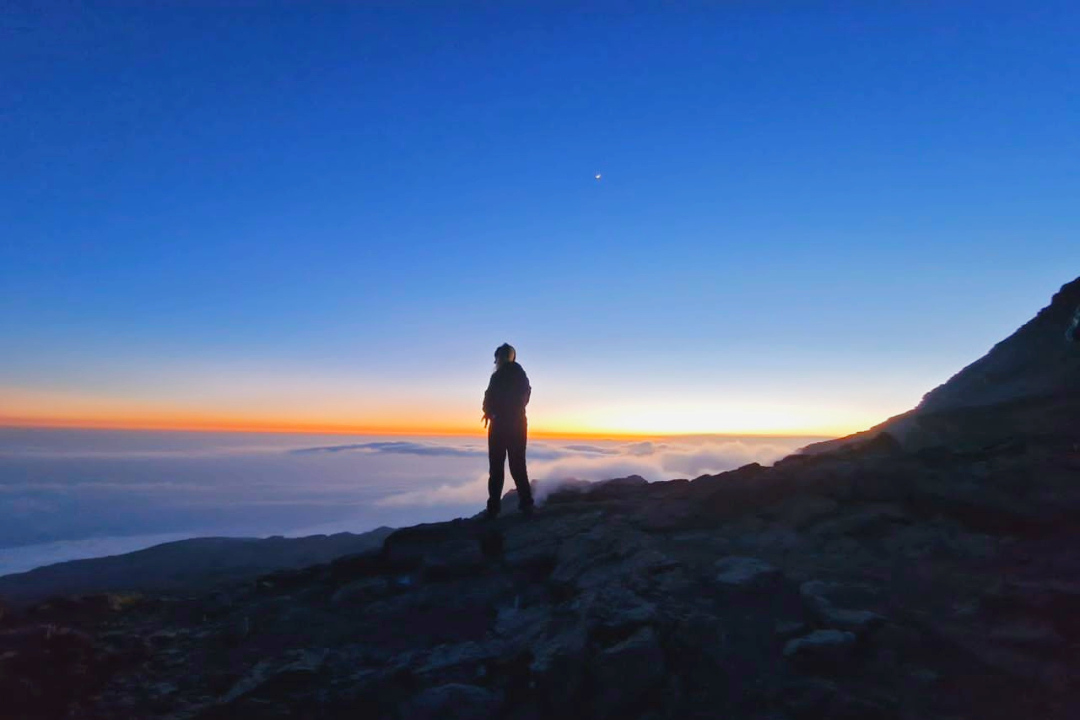

HIGHLIGHTS
Journey through rainforests to alpine deserts on Kilimanjaro
Stand on top Africa’s roof Uhuru Peak for epic views
Experience the beauty of Kilimanjaro with scenic campsites under the stars
Qualified mountain guides ensures safety, tailoring the trek for your pace and offers insights into the surroundings ecology
Gear and equipment rentals are available through our service
Proud members of Mount Kilimanjaro Porters Society

Wander Through Forest and Moorland
The Kilimanjaro Machame Route, also referred to as the “Whisky Route”, is a popular yet challenging trek up Mount Kilimanjaro. The route goes up steep paths, through enchanting forests and over a ridge leading through the moorland zones to the Shira Plateau, where you will have the opportunity to witness wide-open skies and the mountain’s grandeur. The trail is an exercise in endurance and presents climbers with the beauty of Kilimanjaro’s varied landscapes.
Ice Fields and the Mweka Route
The journey continues beneath the high glaciated cliffs of the Southern Ice fields, to merge with the Barafu Route to the summit. An additional day can be added to the itinerary for extra acclimatization, best spent on the Shira Plateau where you can explore the Shira Needles. More experienced climbers may choose to forgo the camp at Karanga River, and march right ahead to the top of the mountain. The descent goes via the Mweka Route that leads you back to the mountain’s base.
Climbing Machame Route solo? Don’t worry, all travelers have the option to choose between a private climb or to be placed in a group with other climbers. Solo adventurers looking to join a group will be well taken care of, ensuring they can share the experience with other trekkers.
A Perfect Finale with Safari Excursions or Zanzibar Retreats
Many climbers like to combine their challenging journey with the addition of a brief safari adventure of chioce, or a relaxed stay by the white beaches of the wonderful Zanzibar. Contact us for seamless integration with our travel packages, where your adventurous spirit meets boundless opportunities.
Climbing Kilimanjaro via the Machame Route is a breathtaking experience and each of the different routes has something different to offer. If you want to explore other unique perspective of the majestic Kilimanjaro, check out the Coca-Cola and Lemosho routes.
| Day 1 |
KILIMANJARO AIRPORT – MOSHI | SPRINGLANDS HOTELArrival at Kilimanjaro International Airport where you will be picked up and transferred to Springlands Hotel or similar for an overnight bed and breakfast. Overnight at Springlands Hotel (bed and breakfast) or Similar. |
| Day 2 |
MOSHI | MACHAME PARK GATE | MACHAME CAMPAltitude: 1,800 m – 3,100 m Hiking distance: 11 km
|
| Day 3 |
MACHAME CAMP | SHIRA CAMPAltitude: 3,100 m – 3,840 m Hiking distance: 5 km
|
| Day 4 |
SHIRA CAMP | LAVA TOWER | BARRANCO CAMPAltitude: 3,840 m – 3,940 m Hiking distance: 11 km
|
| Day 5 |
BARRANCO CAMP | KARANGA CAMPAltitude: 3,940 m – 4,035 m Hiking distance: 6 km
|
| Day 6 |
KARANGA CAMP | BARAFU CAMPAltitude: 4,035 m – 4,670 m Hiking distance: 4 km
|
| Day 7 |
BARAFU CAMP | SUMMIT | MWEKA CAMPAltitude: 4,670 m – 5, 895 m – 3,100 m Hiking distance: 17 km
|
| Day 8 |
MWEKA CAMP | MWEKA PARK GATE | MOSHI | SPRINGLANDS HOTELAltitude: 3,100 m – 1,800 m Hiking distance: 10 km
|
| Day 9 |
KILIMANJARO AIRPORT | DEPARTUREAfter an early breakfast, transfer to Kilimanjaro airport for your departure flight back home. |
| Day 1 |
KILIMANJARO AIRPORT – MOSHI | SPRINGLANDS HOTELArrival at Kilimanjaro International Airport where you will be picked up and transferred to Springlands Hotel or similar for an overnight bed and breakfast. Overnight at Springlands Hotel (bed and breakfast) or Similar. |
| Day 2 |
MOSHI | MACHAME PARK GATE | MACHAME CAMPAltitude: 1,800 m – 3,100 m Hiking distance: 11 km
|
| Day 3 |
MACHAME CAMP | SHIRA CAMPAltitude: 3,100 m – 3,840 m Hiking distance: 5 km
|
| Day 4 |
SHIRA CAMP | LAVA TOWER | BARRANCO CAMPAltitude: 3,840 m – 3,940 m Hiking distance: 11 km
|
| Day 5 |
BARRANCO CAMP | KARANGA CAMP | BARAFU CAMPAltitude: 3,960 m – 4,550 m Hiking distance: 13 km
|
| Day 6 |
BARAFU CAMP | SUMMIT | MWEKA CAMPAltitude: 4,670 m – 5,895 m – 3,100 m Hiking distance: 17 km
|
| Day 7 |
MWEKA CAMP | MWEKA PARK GATE | MOSHI | SPRINGLANDS HOTELAltitude: 3,100 m – 1,800 m Hiking distance: 10 km
|
| Day 8 |
KILIMANJARO AIRPORT | DEPARTUREAfter an early breakfast, transfer to Kilimanjaro airport for your departure flight back home. |
Push you limits and experience views out of this world
The Whiskey Route, also known as the Machame Route, is one of the most popular climbing routes on Mount Kilimanjaro in Tanzania. It is a challenging and scenic route that takes climbers through diverse landscapes, including rainforest, heath, moorland, and alpine desert, before reaching the summit at Uhuru Peak.
- Our Mountain guides are qualified and professional. They ensure your safety and adjust the trek according to you.
- We are members of the Mountain Kilimanjaro Porters Society (MKPS), ensuring the safety and education of the porters.
- This route features camping and absolutely stunning sceneries.
The personal challenge of a lifetime
The whiskey route will be a personal challenge to push yourself physically and mentally and to test your limits. You can do it for the sense of accomplishment and achievement of climbing Africa’s highest peak, standing at 5,895 meters (19,341 feet) tall. The Kilimanjaro Machame Route is also known for its stunning views of the surrounding landscape, including the snow-capped peak of Mount Kilimanjaro, the surrounding plains, and the distant Mount Meru. This route is known for its diverse landscapes and scenic beauty. Climbers on this route pass through rainforest, heath, moorland, and alpine desert, providing a unique and varied experience. The route is also steeper and more challenging than some of the other routes, with many sections of steep inclines and rock scrambles. The Kilimanjaro Machame Route is one of the more crowded routes. This is because it is a popular route and is often recommended for those who want to climb the mountain in a relatively short time period. Other routes, such as the Lemosho, Marangu or Northern Circuit, may have fewer climbers and a more isolated experience.
A popular path with a high success rate
The Machame Route is typically climbed in six or seven days, making it one of the shorter routes on the mountain. Other routes, such as the Lemosho or Northern Circuit, can take up to nine or ten days to complete. The shorter duration of the Machame Route can make it a good option for those with limited time, but it also means that climbers may need to acclimatize more quickly, which can increase the risk of altitude sickness. The success rate of climbers on the Kilimanjaro Machame Route is relatively high compared to some of the other routes on the mountain. For many climbers, the opportunity to experience the natural beauty of Tanzania and to witness the sunrise from the summit of Kilimanjaro is a once-in-a-lifetime experience.
Tanzania activities
 Short n’ Sweet Safari 2 Days From $499 USD Visit Lake Manyara and Ngorongoro Crater to get your fill of wildlife in just two days, an experience that will stick with you for life! Read more
Short n’ Sweet Safari 2 Days From $499 USD Visit Lake Manyara and Ngorongoro Crater to get your fill of wildlife in just two days, an experience that will stick with you for life! Read more Safari in Tarangire National Park Day Trip From $199 USD Lots of Safari packed into a single day! Enjoy herds of elephants and a spectacular variety of exotic birds in the wonderful Tarangire! Read more
Safari in Tarangire National Park Day Trip From $199 USD Lots of Safari packed into a single day! Enjoy herds of elephants and a spectacular variety of exotic birds in the wonderful Tarangire! Read more Materuni Waterfalls and Coffee Plantation Day Trip From $99 USD Swim in the clear pool and visit the nearby village and learn about the craft of local coffee-making. Read more
Materuni Waterfalls and Coffee Plantation Day Trip From $99 USD Swim in the clear pool and visit the nearby village and learn about the craft of local coffee-making. Read more Lake Chala Hike and Canoe Day Trip From $129 USD Try some canoeing or just soak up the panoramic view of the tropical forest by the lake. Read more
Lake Chala Hike and Canoe Day Trip From $129 USD Try some canoeing or just soak up the panoramic view of the tropical forest by the lake. Read more Kilimanjaro Marathon Day Trip From $238 USD Combine a physical challenge with breathtaking scenery and Tanzanian culture, all while contributing to charitable causes. Read more
Kilimanjaro Marathon Day Trip From $238 USD Combine a physical challenge with breathtaking scenery and Tanzanian culture, all while contributing to charitable causes. Read more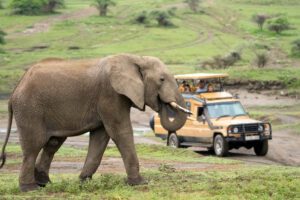 A Taste of The Savanna Safari 2 Days From $399 USD Experience a short but impactful safari, blending wildlife wonders and stunning landscapes across Tarangire National Park and Ngorongoro Crater. Read more
A Taste of The Savanna Safari 2 Days From $399 USD Experience a short but impactful safari, blending wildlife wonders and stunning landscapes across Tarangire National Park and Ngorongoro Crater. Read more Usambara Mountains From 2 days Price from $1100 Visit the Usambara Mountains, an off the beaten track add on that will leave you blown away! Read more
Usambara Mountains From 2 days Price from $1100 Visit the Usambara Mountains, an off the beaten track add on that will leave you blown away! Read more Olduvai Gorge Tour Day Trip $58 Get to see where it all started - the cradle of humanity! Book now! Read more
Olduvai Gorge Tour Day Trip $58 Get to see where it all started - the cradle of humanity! Book now! Read more Walking Safari Day Trip from $700 Feet on the ground, exposed in the wild. No better way to experience the national parks! Read more
Walking Safari Day Trip from $700 Feet on the ground, exposed in the wild. No better way to experience the national parks! Read more Tarangire Balloon Safari Day Trip from $510 Get a birds eye view of the Tarangire National Park! Book now! Read more
Tarangire Balloon Safari Day Trip from $510 Get a birds eye view of the Tarangire National Park! Book now! Read more

How are the sleeping tents and the standard when I climb Mount Kilimanjaro?
On the Machame route and Lemosho route, you will be sleeping in tents. We use strong, waterproof, and durable tents on Mt Kili climb. The tents are capable of housing 2 to 3 people and are made to withstand tough mountain conditions. They are spacious and create even more room to store luggage. Meals are served in large, warm, and extremely strong tents with good head height and comfy camp chairs.
Do I need specialist equipment to trek Mt Kilimanjaro?
You don’t need to own your own specialist mountain climbing gear. You can rent most of the clothing and equipment that you may need in Tanzania. But bringing your own clothes, well-worn-in boots, and a good sleeping bag is best. You will need a small day pack with enough space for wind and rain clothes, some first aid supplies, 3 liters of water, and snacks. Your packing list should include warm clothes (fleece, wind, and waterproof layers), good polarised sunglasses, sunscreen, and a headlamp. You might prefer to use walking sticks and gaiters, but these can be rented. Even thermal underwear and down jackets can be rented from us. If you think you do not have the correct clothing and gear, please get in touch with us at sales@worldadventuretours.com
Are washrooms available along the climbing routes?
You can rent a portable toilet from the rental store at an extra cost.
Do I get provided drinking water during the trek?
Yes, Porters collect water from the streams, which is boiled before use. This water will be used to fill your water canisters. You can use purification tablets if you have them with you. If you want bottled water up the mountain, you will have to pay extra.
Should I train before to prepare for my Mount Kilimanjaro climb?
You do not need to train before your Kili climb. But, any previous experience or practice will help you increase your chance of making the top. You need to be fit and healthy and have a good pair of worn-in hiking boots. The fitter you are, the more you are likely to enjoy it. It’s best to start your training at least three to six months before your planned climb. You can begin by incorporating regular exercise into your daily routine, such as jogging, hiking, or cycling, to improve your cardiovascular fitness and build endurance. You should also focus on strength training exercises that target your core, legs, and upper body, such as squats, lunges, push-ups, and planks. Strengthening these muscle groups will help you cope with the uphill climbs, rocky terrain, and long days of hiking.
What is the difference between the Lemosho route, the Marangu route, and the Machame route?
The Lemosho Route is considered one of the most scenic routes to climb Kilimanjaro, as it offers stunning views of the mountain from different angles. It is also one of the longer routes, typically taking 7-8 days to complete. The Lemosho route starts on the mountain’s western side and gradually ascends through various landscapes, from dense rainforests to alpine deserts. This route is known for its high success rate due to its gradual ascent profile, allowing climbers to acclimatize well.
The Marangu Route, also known as the “Coca-Cola Route,” is the oldest and most popular route to climb Kilimanjaro. It is the only route with sleeping huts instead of tents, which makes it a good option for those who prefer not to camp. The Marangu route is also the shortest route, typically taking 5-6 days to complete. However, due to the fast ascent profile, it has a lower success rate than other routes. The route starts on the southeastern side of the mountain and passes through forests, heathlands, and moorlands.
The Machame Route is considered one of the most challenging routes to climb Kilimanjaro due to its steep ascent profile and several high-altitude days. It is also one of the most scenic routes, offering panoramic views of the mountain and its surroundings. The Machame route typically takes 6-7 days to complete, starting on the southwestern side of the mountain and passing through rainforests, heathlands, and moorlands. This route is known for its high success rate due to its gradual ascent profile and good opportunities for acclimatization.
How many hours per day can I expect to walk on my Kili climb?
The number of hours per day you can expect to walk when climbing Mount Kilimanjaro depends on the route you choose and your individual pace. Generally, you can expect to walk between 4 to 10 hours per day, depending on the route and the itinerary. Here’s a rough breakdown of the average walking hours per day on the three most popular routes:
Lemosho Route: On the Lemosho route, the average walking hours per day are between 5 to 8 hours, with some long days of up to 10 hours. This route has a more gradual ascent profile, allowing for better acclimatization and longer hiking days.
Marangu Route: The Marangu route is the shortest route, with an average walking time of 4 to 6 hours per day. The walking hours are shorter due to the route’s faster ascent profile, which can increase the risk of altitude sickness.
Machame Route: The Machame route has an average walking time of 6 to 8 hours per day, with some long days of up to 10 hours. This route has a steeper ascent profile, which requires more effort and can lead to fatigue.
What is altitude sickness, and how can I avoid this?
Altitude sickness, also known as acute mountain sickness (AMS), is a condition caused by exposure to high altitudes with low oxygen levels. It can affect anyone, regardless of age, gender, or fitness level, and can lead to serious health complications if not managed properly. The symptoms of altitude sickness can vary in severity but generally include headache, nausea, dizziness, fatigue, shortness of breath, and loss of appetite. In severe cases, altitude sickness can progress to more serious conditions, such as high-altitude pulmonary edema (HAPE) or high-altitude cerebral edema (HACE), which can be life-threatening. Suppose someone at some point is not able to continue the route. In that case, our mountain guides will accompany you down or off the mountain on a stretcher, by vehicle, or by air evacuation, depending on the urgency of the problem. Always inform the guides of your condition.
To avoid altitude sickness when climbing Mount Kilimanjaro, it’s essential to take the following precautions:
Gradual ascent: Choose a route with a gradual ascent profile, such as the Lemosho or Machame routes, which allows for proper acclimatization. Ascend slowly, taking enough time to allow your body to adjust to the altitude. Avoid climbing too quickly or spending too much time at high altitudes.
Hydration: Drink plenty of fluids, preferably water, to stay hydrated and help your body cope with the altitude. Avoid alcohol, caffeine, and other diuretics, as they can dehydrate you and increase the risk of AMS.
Proper nutrition: Eat a balanced diet, including carbohydrates, proteins, and fats, to provide your body with the energy it needs to cope with the physical demands of the climb.
Medication: Consider taking medication, such as acetazolamide, under the guidance of a doctor to help prevent AMS.
Rest and recovery: Take breaks and rest when needed, especially if you experience any symptoms of altitude sickness. Descend to lower altitudes, if necessary, to allow your body to recover.
What type of food can I expect to be served on my Mount Kilimanjaro climb?
Our cooks prepare delicious meals with fresh local ingredients. If you have any special meal requirements, please inform us beforehand at sales@worldadventuretours.com
Do you provide oxygen tanks?
We provide oxygen tanks and complementary pulsometers.
When is the best time to climb Mount Kilimanjaro?
The best time to climb Mount Kilimanjaro is during the dry season, which runs from late June to October and from December to February. The weather is generally dry and sunny during these months, making for better climbing conditions and clearer views. The dry season is divided into two seasons: the short dry season from late December to early February and the long dry season from late June to October. Both of these periods offer good climbing conditions, with the long dry season being the most popular time to climb Kilimanjaro. During the dry season, the temperatures are milder and more predictable, with daytime temperatures ranging from 20 to 27°C (68 to 81°F) and nighttime temperatures ranging from 5 to 10°C (41 to 50°F). There is also less precipitation, making the trails less muddy and slippery. While it’s still possible to climb Kilimanjaro during the wet season, from March to May and from November to early December, the weather can be more challenging, with heavy rainfall and cloudy conditions. The trails can also be more slippery and difficult to navigate, and clouds can obscure the views.
What is the Maximum Number of people per group?
Maximum of 8 people per group. If you are a larger group, then we can arrange this accordingly. Just contact us at sales@worldadventuretours.com
Do you recommend travel insurance?
We highly recommend that you have travel insurance before your Mount Kilimanjaro trek. Also, check with your insurance beforehand that climbs over 5000m are included in the insurance.
What is the success rate of climbing Mount Kilimanjaro?
The success rate of climbing Mount Kilimanjaro varies depending on the route, the length of the climb, and other factors such as individual fitness levels and weather conditions. The success rates depend on the route chosen and the number of days. Shorter routes have a low success rate compared to longer routes, with a success rate of 85-90%. The longer the route, the higher the success rate, as you get ample time for acclimatization.
What is the tipping etiquette for safari guides and mountain crews on trips like this?
Tipping is highly appreciated at the end of safari/mountain climb. The size of tips will vary depending on the length and complexity of the trip, the number of staff on the trip and the number of clients on the trip. Generally, groups like to meet together before the end of the trek to discuss how much they would like to tip each staff member based on their individual trek experience. You should prepare an envelope after your trek for your tip money at the Hotel. You can use US dollars, Euros, TZ Shillings or a combination of these. Please ask the Safari/Climbing coordinator at the Hotel for advice.
RECOMMENDED TIP:
Mountain Climbs: $25-50 USD per Day per Climber to be shared between guides, chefs and porters.
Safaris: Driver/Guide: $35-50 USD per Day per Car. If it is a camping safari there will be a tip for the cook $10 USD per Day.
THESE ARE JUST GUIDELINES AND TIPS CAN BE GIVEN TO SAFARI STAFF/MOUNTAIN CREW ACCORDING TO SERVICES PROVIDED.
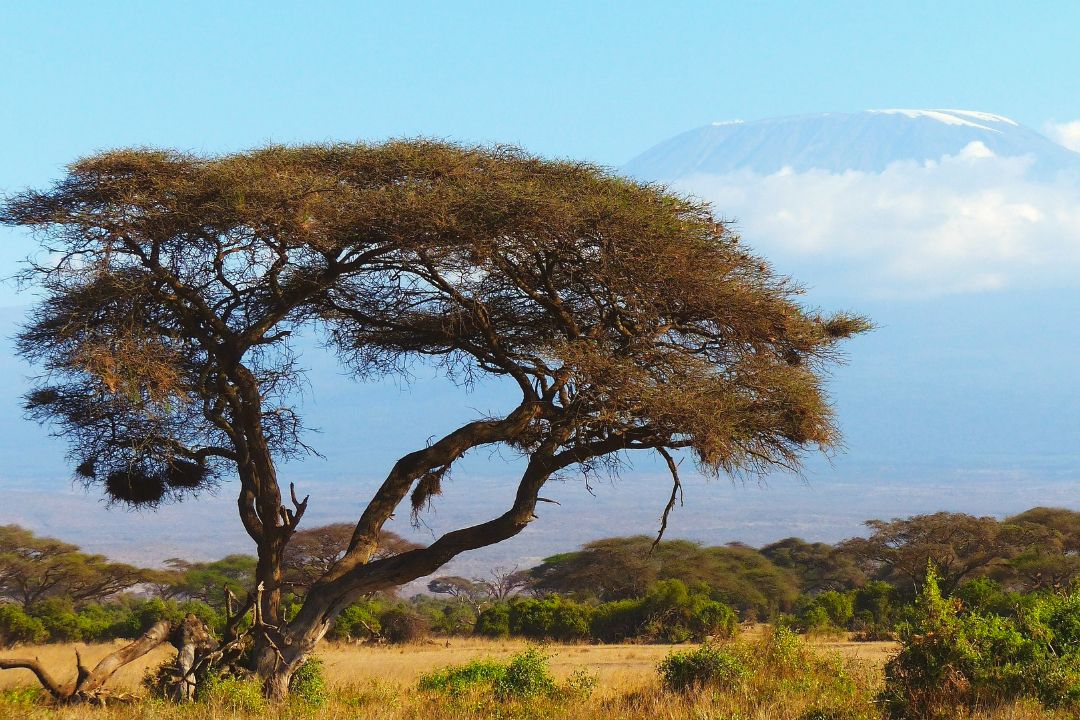
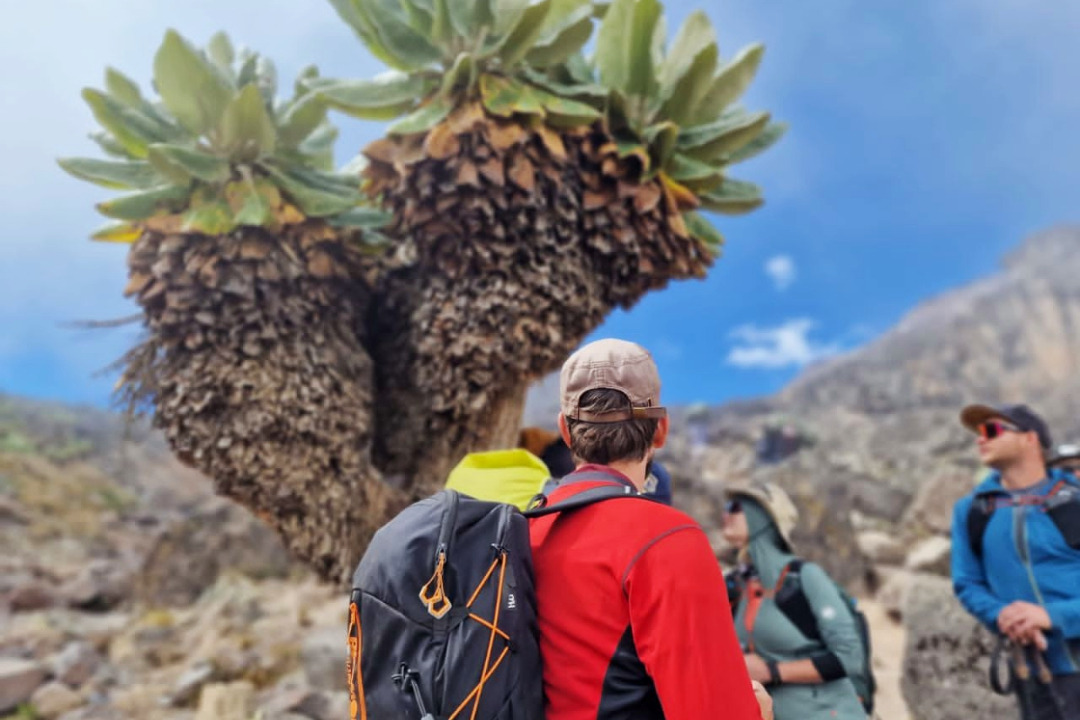
Accommodation
Springlands Hotel
Springlands Hotel in Moshi, 29 km from Kilimanjaro, offers accommodation with amenities like an outdoor pool, complimentary parking, a bar, 24-hour reception, and free WiFi. Continental or à la carte breakfast is served at the hotel.
Rooms are equipped with air conditioning, a seating area, satellite TV, a kitchenette, dining area, and private bathroom with all essentials, including a kettle. Enjoy a hiking around Moshi, with a mini-supermarket just 3 km away.
Upgrade to Chanya Lodge or Gran Melia Hotel.
Campsites
The campsites offer practical tents that is set up by the porters. You will need a sleeping bag, warm clothes to handle the cold nights and walking poles for the terrain.
The porters will boil drinking and washing water, and cook and serve dinner at the camps.
Enjoy basic and functional amenities in unforgettable scenic locations.
All gear and equipment are available to rent through us!
Accommodation Upgrades
Chanya Lodge
Chanya Lodge is located at the foothills of the majestic Mount Kilimanjaro, just outside Moshi in Tanzania. A convenient drive from the airport it’s perfect for trekkers, tourists, families and business visitors.
The residence offers 32 en-suite rooms, a large pool, a diverse cuisine restaurant and beautiful grassy gardens.
Gran Melia Hotel, Arusha
This magnificent hotel Is located between the majestic Serengeti and Kilimanjaro National Parks, unveiling the natural beauty of Tanzania’s wilderness.
Enjoy an oasis of five-star luxury and comfort with unbeatable facilities, exclusive suites, international cuisine, spa, an infinity pool and a gym – it’s the ideal retreat for an exciting safari adventure or a luxurious business meeting.
Included in the price:
- Two nights accommodation in Moshi bed and breakfast
- Airport transfers
- Transportation from Moshi to the starting point on the mountain and return to Moshi
- National Park gate fees, hut/camping fees
- Rescue fees, tents, and sleeping mattresses
- Guides’ salaries, porters’ salaries, and all meals on the mountain
- Guides, porters, and cooks’ accommodation and entry fees on the mountain
Price does not cover:
- Domestic or International flights
- Entry visa to Tanzania
- Travel and health insurance
- Single room supplement at Springlands Hotel
- Guides, porters, and cook tips – Find guidelines in the FAQ
- Mountain gear e.g. sleeping bags, clothes, and shoes but some climbing gear will be available for hire at Springlands Hotel
Rest assured, we’re here to assist with anything not covered in the price.
Your convenience is our priority.
Request A Free Quote!
- Best price guarantee
- Without any obligation to book
- Your request will be sent directly to the operator

